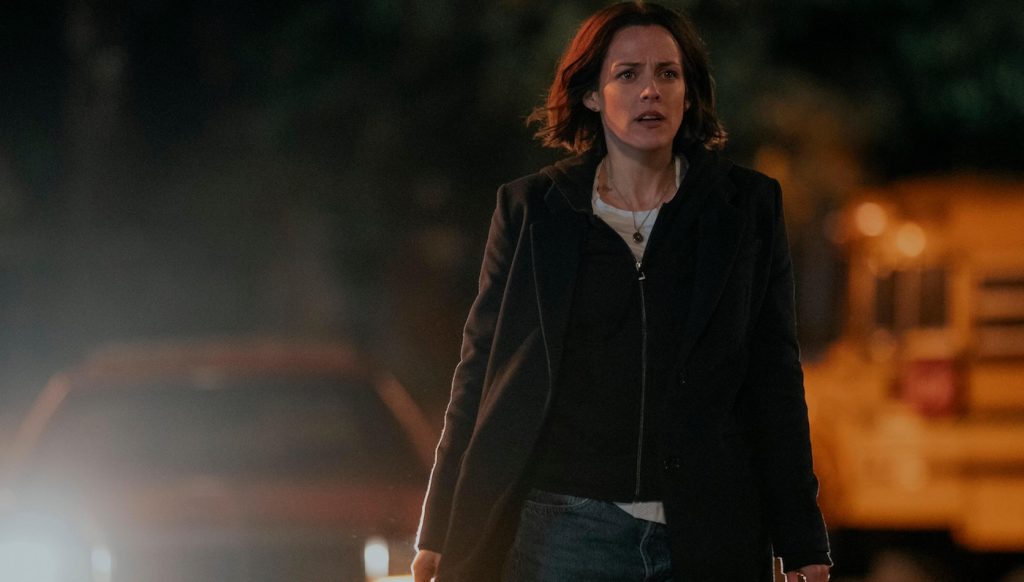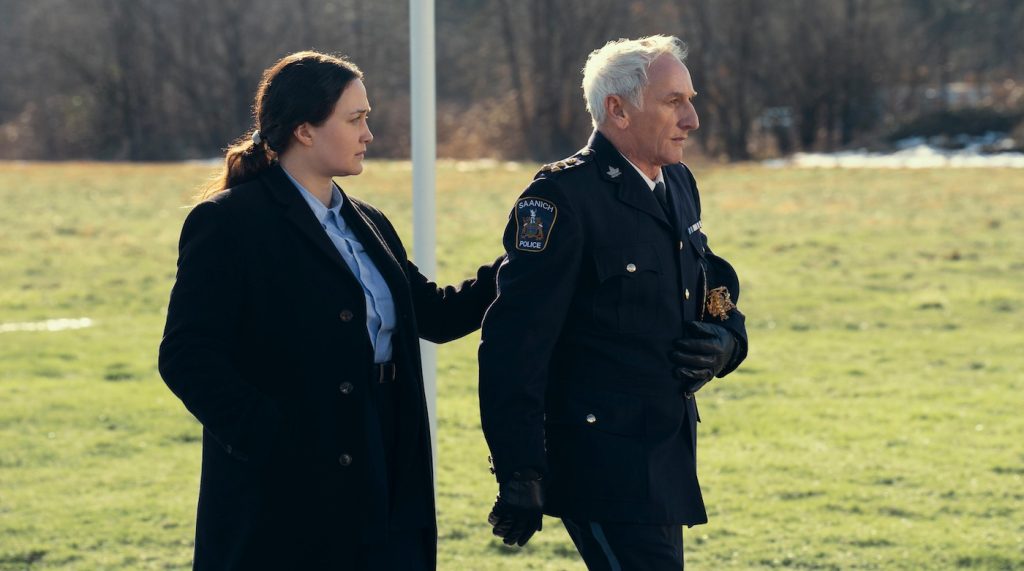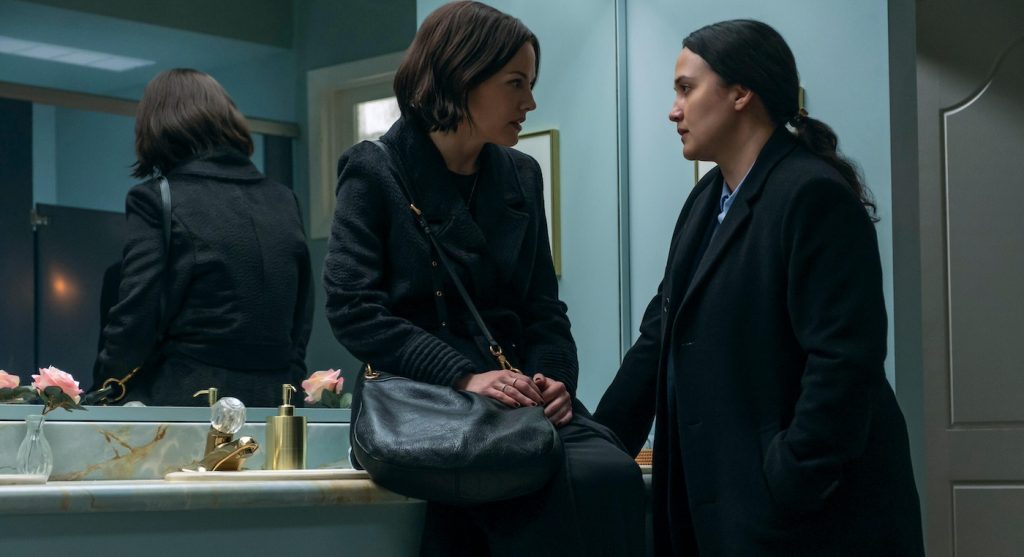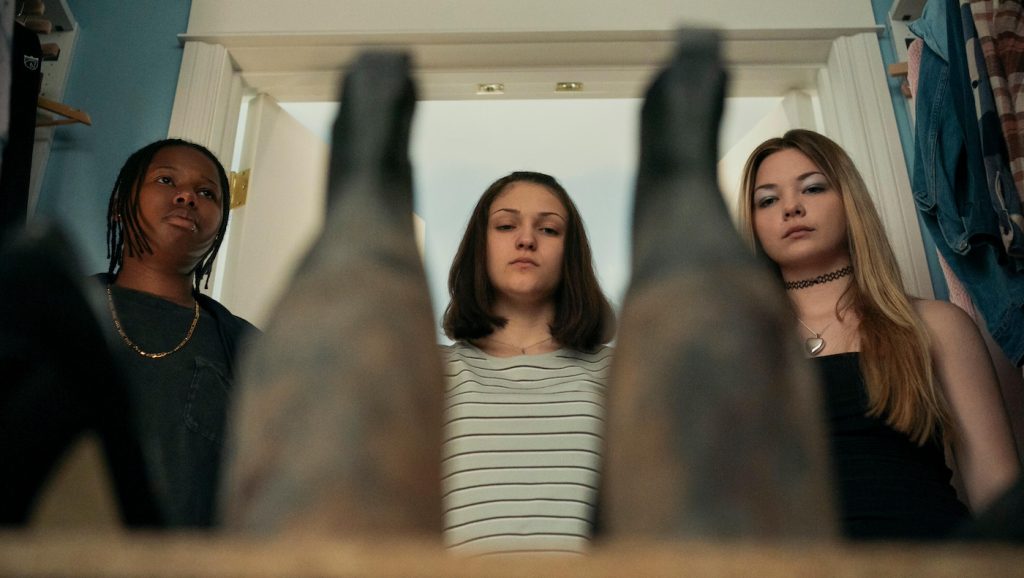“Under the Bridge” EP/Director Quinn Shephard on Lily Gladstone & Riley Keough’s Twisty Murder Mystery
In 1997, fourteen-year-old Reena Virk went to a party and never came home, then became front page news around the world when a tight-knit circle of girls and one troubled teenage boy were implicated in her murder. Journalist Rebecca Godfrey wrote about the crime in her acclaimed book “Under the Bridge”, and now Hulu’s narrative series of the same name delves into the life of the victim, as well as those involved in her death. In it, Riley Keough plays Rebecca Godfrey, who finds herself getting too close to the teens in her desire to find the truth. Lily Gladstone plays the fictional character Cam, a childhood friend and police officer with whom Rebecca shares a complicated past.
Executive producer and writer Quinn Shephard adapted Under the Bridge for Hulu and directed episodes 5 and 6, both of which feature a deeper focus on the teens’ lives. Shephard worked closely on the adaptation with Godfrey, who passed away in 2022. The Credits spoke to Shephard about the pull she felt toward this shocking true story, working with Godfrey, and her experience directing the series.
Rebecca Godfrey is so integral to the show, both as a creator and a character. How important was your collaboration to the finished series?
I don’t think I could possibly overstate her level of influence. It was Rebecca’s book, but so much of her essence and life were part of the show. She was quite generous with sharing that with me, and also giving freedom to explore where we could dip a toe into fictionalization with her character. It was really fun getting to work with somebody who didn’t seem at all precious about her character being sanitized or heroic and who was really game for her being flawed and human. It spoke to her overall ethos as a writer. She had a real appetite to tell very complicated stories about young women. I met her in early 2020, and we worked together for almost three years until she passed away. She let me in fully to her world, including looking at family photos, delving into her backstory and psyche, the music she listened to, and how she met the kids. It was all a really incredible resource.

You directed Episode 5, “When The Heat Comes Down,” and Episode 6, “In Water, They Sink The Same.” Can you discuss a choice as a director that speaks to your aesthetic or particular style?
I really wanted to direct those episodes because they are the most heavily focused on the teen storyline. The goal with them was to really throw the audience into how the teens might have felt in that scenario. Our joke in the room was that we should be writing them with the gravity of The Sopranos and that it should feel as intense and real as being in the mafia. Episodes 5 and 6 are one big arc of throwing ourselves into this extremely tense state that the teens are in after the crime and show how that happens. Simultaneously, in the past, we’re exploring the more tender and human moments about those people and seeing how the two timelines meet. There were some sequences in it that I was really excited about from the beginning, especially shooting Riley and Javon as Rebecca and one of the teenagers, Warren, in the warehouse, which is important because it’s their first real bonding experience when they’re tripping on acid together.
How did you approach that scene?
It gave me the ability to be really visually creative, because we knew going into the acid trip we wanted to do everything practically, without VFX. I was working with DP Checco Varese for that episode, and we created something that would hold a fixed close-up of an actor while going in and out. It was fully manual, so the dolly grip would move the camera back and forth during all of the close-up coverage of Javon and Riley. The frame wouldn’t change, but the depth perception of the world behind them and the angles of their faces would be shifting slightly the whole time. As a director, stuff like that is really exciting to me to think about how to fully, practically execute a feeling while being grounded and in the world of the show. The directors on the show before me, who I’d been on set with, created such a very grounded language for the show, and I was excited to pick that up and add a little bit of my own spin on it.
How did you develop Cam, Lily Gladstone’s character? Is she a composite of real people working to solve the crime?
Cam was based heavily on details of the entire investigative team and things that the police force went through. One woman worked on the case in real life, but she was not a direct adaptation into Cam, and she was also a white woman. The people tasked with solving this crime, in reality, were largely white men. It was a creative choice to be able to look at this crime through a modern lens and make it something more personal. She also came out of a need in the narrative. Once Rebecca was introduced as a perspective, I wanted to have a meaningful foil to her. I wanted somebody who wasn’t seduced by the world of teenagers or as fascinated by them, but more someone who believed there was no possible way of excusing this sort of violence. In terms of Cam’s relationship with Rebecca, a lot of that is fictionalized. It was such a huge cast of characters in real life, so we took off a lot of men that really existed and created Cam and just made her a badass. It also gave us an opportunity to dig in a lot harder, both as a critique of the justice system and Canada’s Pacific history. There’s a lot of romanticization of Canada, imagining they have less of a dark history than we do in the US, and that’s not the case. Cam’s fictional backstory and her being a cop were a way to comment on all that.


The series certainly reflects aspects of coming of age rarely expressed onscreen.
It was an opportunity, at least from my perspective, to deal with so many universal themes about girlhood, but completely devoid of the male gaze. It dealt with every universal aspect of childhood and of being a girl that was rooted in identity, wanting a sense of belonging, a sense of family, about bullying, about violence, about the internalized violence that these girls were dealing with, and socio-economic struggles and racism. Honestly, it’s a story that stretches across so many themes. It’s something I hadn’t really seen explored on television, and it was true. I also saw the opportunity, with the adult storyline, to comment on how stories about young women are often told.

The story just gets more complicated as it goes on.
There’s a theme in the show that stories never end, and there was something endless about this one, where every crevice you looked into would open up a conversation that was very human. It was never a dead end. I think that was really fascinating to all of us who worked on the show.
What are you hoping for audiences who watch the series?
The most rewarding reactions for me have been people’s feelings of being conflicted and the moral dilemma of having to sit with it. That’s why I’m very happy it’s a weekly show, because as you get deeper into it, it becomes more challenging emotionally. There are definitely episodes intended to have you walk away feeling as if you’re holding multiple opposing opinions, all of which have valid points and flaws. As an artist, that is the thing I want most from an audience. When I walk away from something, and I genuinely want to have a debate even within myself about how I feel about it, that’s the stuff that makes me look at what part I play in the bigger picture. It helps me step up to the plate as a human being. How do I feel about this, and how might I be a part of the aspect of society that contributes to things like this happening? Reflections like that, for me, come from being challenged.
New episodes of Under the Bridge are airing Wednesdays on Hulu.
Featured image: Under The Bridge — “In Water They Sink The Same” – Episode 106 — Past and present wounds entwine as Rebecca and Cam’s alliance is tested. The Virks discuss taking matters into their own hands, and the teens use a school dance as cover for their escape plan — all as another life is threatened. Rebecca (Riley Keough) and Cam (Lily Gladstone), shown. (Photo by: Darko Sikman/Hulu)



